

|
Home Updates Hydros Cars Engines Contacts Links ←Pitbox 19 Pitbox 21→ Pit Box Index |
|
Pitbox 2020 |
|
|
Oliver RV
Following the trip to Sweden in 1949 the Olivers
first produced a disc valve replica of the Busy motor and then a
shaft rotary valve version, the RV, later known as the Tiger MkI.
Exact production numbers are unknown at present but certainly
fewer than fifty in total, but this is the only one known to
exist (unless someone has another lurking in their collection).
For many years it resided in one of Joe Shelton's Bottoms Up
cars, but was not the original motor for that car as it was a
later version that was cut for a Tiger MkII. Eventually the
owner removed it and offered the, so far unique, Oliver RV for sale.
|
|
|
Shelton Oliver
S/Sergeant Joe Shelton was a well
established racer in the US before he came to serve in the UK
and Germany. He raced in several classes, using Oliver cars in
1.5cc and 2.5cc and Bordens amongst others in the larger
classes. Two of his Oliver 'Bottoms Up' cars survive in the US,
the first we featured in Pitbox in 2015
but this one was unknown until the owner conracted us recently.
The odd rear wheels are due to the original Raylites having shed
their treads whilst running up the motor. Joe did visit a
meeting at Orebro many years later where he met current
competitors. |
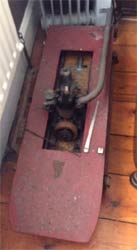 |
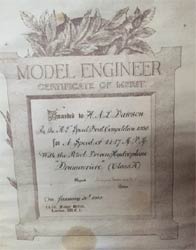 |
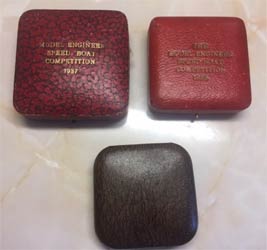 |
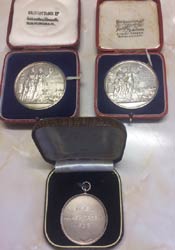 |
|
Dawson memorabilia: |
|||
|
|
1066 Trio Gordon Williams was a superb engineer who built a large number of engines, including one of only two 1066 Falcon 2 10cc motors known to exist. In the auction of his collection 1n 2019, these three versions of 1066 5cc engines appeared. At the top is the very common Falcon. (who didn't notice the fuel tank awry?) In the middle the Arrow and nearest is the rarer Hawk, available for just a year and only as a factory built motor, although lots of bits did make their way out of the works to be put together at a later date. The Hawk has a cast iron cylinder screwed into the crankcase yet other parts are shared between the motors. Thank to Miles Patience for alerting us to these items. Sept 2020 |
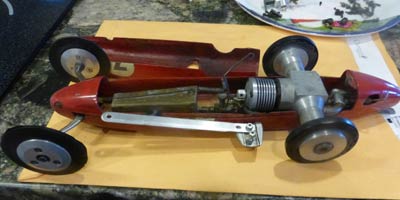 |
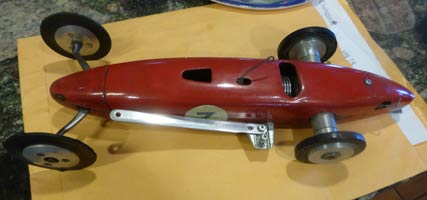 |
|
Another GRP Oliver:
Following the 1954 European Championships at Woodside, Ron Thrower set about
building a new car for his Oliver motors, but using GRP instead
of castings or beaten aluminium. His car is still in existence and
was featured in a Pitbox in 2017,
but what we were unaware of was that another similar car
existed. We can only guess whether it was built by Ron or
someone else, using his moulds as it does look very similar, the
only clue being the Swiss tyres, but these might have been
obtained at a meeting there? Further research is needed to see
if we can tie up the racing number with any known competitor.
|
|
|
|
Glass Plate This glass negative of a tethered car appeared on ebay, purporting to be from the 1920s. The Gerald Smith Redwing or Lapwing motor, ZN wheels and tyres put it towards the end of the 1940s. The chassis is based on the published Buck 2A plan but without the flared and tapered side rails. Most unusually the drive train includes a flywheel, magneto, cardan shaft and then a dog clutch, possibly to another centrifugal clutch. Something of a mystery and a great deal of work involved. Wonder what became of it? July 2020 |
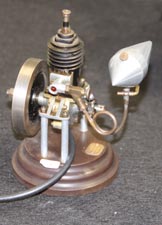 |
 |
 |
 |
|
100 years on: Each pair of photos is of the same engine but taken over 100 years apart. Fred Westmoreland built both before the First World War so they are remarkable survivors in any case. The two stroke motor appeared on the Northern Association stand at Leamington and is now in their care, along with Fred's Evil Spirit hydroplane. The steam engine was one of an almost identical pair, this one winning Fred all the prizes in the photo, including the Rose Bowl, which is also still in existence. The engine somehow had made its way to India where it is now in the possession of a doctor who supplied the photo. June 2020 |
|||
|
|
Admonishment from Ken Bedford Cannot be much clearer than this for the new owner of this ETA 29, don't fiddle. Of course, many were convinced they knew better, which has led to a myriad of ruined engines over the years. The Olivers went one stage further by publishing a three page document on how to modify a Mk II twinshaft motor for better performance but adding the rider that 'we cannot guarantee or be responsible for results'. Even then, they were prepared to carry out all the modifications for £3 with a rebore and new piston for an extra £1-5s. Now there is a get out clause? OTW photo May 20202 |
|
|
Sportsdrome relic At one stage, every club, society, supporters group, event and company used to have cloisonné enamelled badges that were pinned on hats, jackets, bags and more. For many years they were avidly collected, some commanding very high prices. Now they are seldom seen, which is why we were delighted to see this memento from the Eaton Bray Sportsdrome that closed seventy years ago. Thanks to Shirley Russell for this item and photo. April 2020 |
|
|
Doc 3. The third of the cars from the late Dr Rankin was a M&E Wasp. These C Class car kits were produced in substantial numbers, but no serial numbers to indicate just how many were made, although they regularly turn up for sale, mostly fitted with an ED Penny Slot motor. The later motor with a compression screw will not fit under the bonnet. The car can run either end first by flipping the gearbox over, which only drives one wheel. The Wasp has probably provided the widest range of price realised in auction of any commercial car with the most expensive at over £1200. The cheapest complete car £125 with a barn find, even less. Thanks to Hamish Rankin for this item. OTW photo, March 2020 |
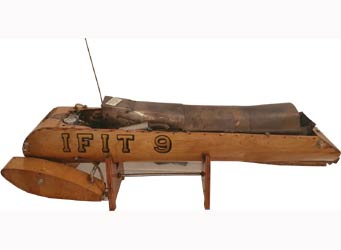 |
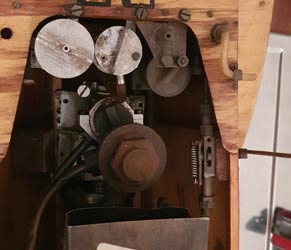 |
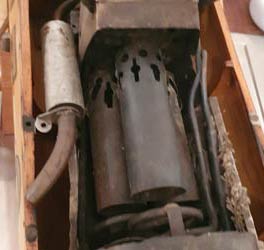 |
|
Ifit 9: After many years of competing with A Class flash steam boats, Arthur Cockman moved to the smaller classes, firstly with the C Class Ifit 8 around 1951, which necessitated an entirely new and significantly lighter motor and steam generator. This was not very successful so the B Class Ifit 9 was conceived, using the same motor but with a new, three burner, boiler. After various teething troubles and changes in pumping arrangements it developed an impressive turn of speed, winning the Crebbin Trophy in 1962. When Arthur retired from running tethered hydros, the complex cruciform pump assembly was used for his straight runner 'Guinivere'. Following his death, Ifit 9 featured in the tethered hydroplane collection at the Pitsea Museum until removed and sold at auction in 2005. Despite every attempt, it had vanished until it appeared on ebay late in 2019. Happily, it has found a new home with an enthusiast who is currently renovating the boat and, thanks to a very generous gesture from Phil Abbott, having the original pumps refitted. Update: Having successfully run the engine on compressed air the plant was finally fired up in late 2020 for a test run. A house move has meant that the fully renovated Ifit 9 is for sale. Thanks to Kevin Ridley for photos and details. Feb 2020 |
||
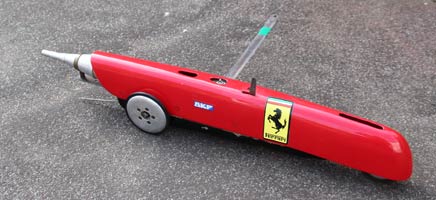 |
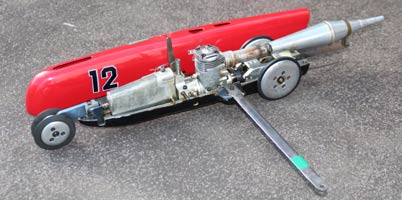 |
|
Another 'Fausch' car:
This is the second of Georg Fausch's cars
from the period when extending the wheelbase was in vogue. The
chassis of this car is significantly older than the one featured
previously as it originally had the front wheels inside the pan. In its
converted form and with a Supertigre X15 for power it was very
successful, winning Class 2 at the 1987 European Championships
in Lyon at a speed of 266.469kph, the fastest to that date. With
its all enclosing body it is not the prettiest of cars, but
highly effective. |
|
©copyrightOTW2020